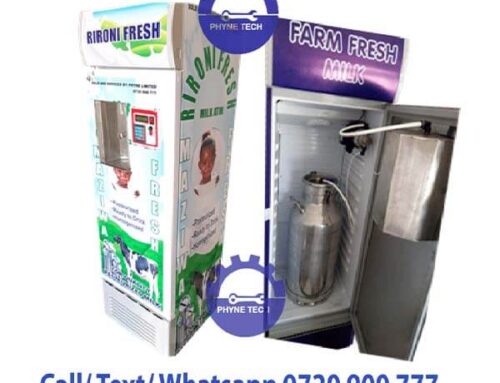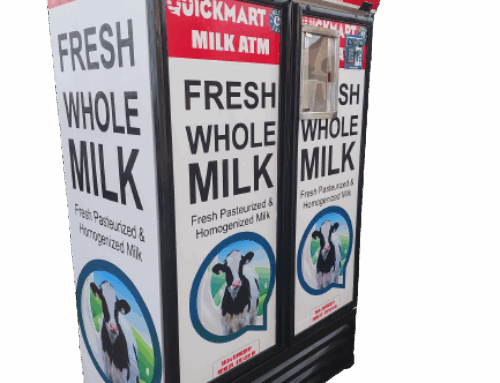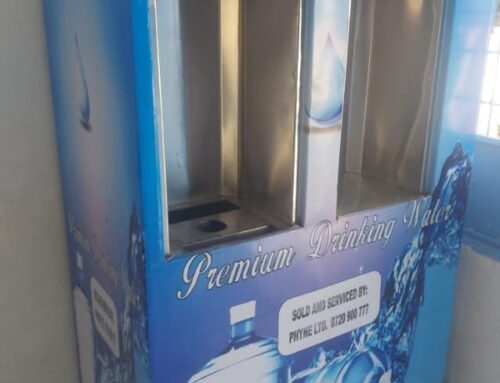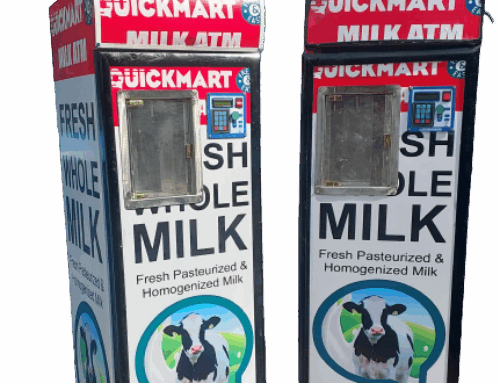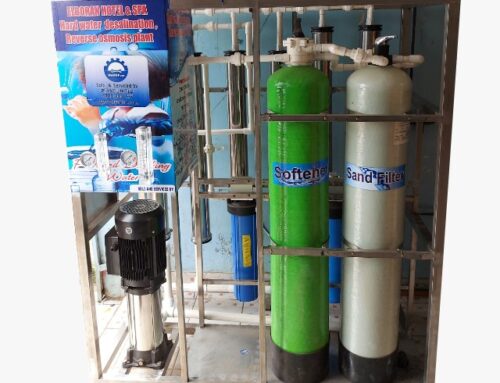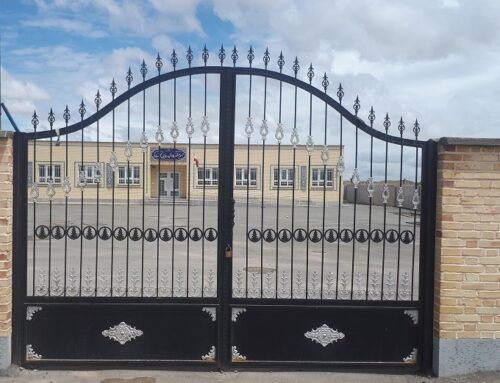The Ultimate Step-by-Step Guide on How to Start a Profitable Milk ATM Business in Kenya in 2025 With Phynetech
Looking for a business idea that’s both low-risk and packed with profit potential in Kenya? Imagine tapping into the ever-growing demand for fresh, affordable milk—a staple in homes across the country. If that sounds like your kind of venture, then starting a milk ATM business in 2025 could be your golden ticket. In this article, we’re breaking down the ultimate step-by-step guide on how to start a profitable milk ATM business in Kenya in 2025, giving you the tools to turn a simple idea into a thriving enterprise.
So, what’s a milk ATM? It’s a vending machine that dispenses fresh milk directly to customers who pay with coins, notes, or even mobile money like M-Pesa. These machines are a hit because they cut out wasteful packaging, keep milk hygienic, and make buying convenient—perfect for Kenya’s bustling dairy market. With milk consumption rising (Kenya produces over 5 billion liters annually, per the Kenya Dairy Board), now’s the time to jump in.
Why Invest in a Milk ATM Business in 2025?
 The milk ATM business is gaining traction as a profitable and sustainable venture. Here’s why getting into this business in 2025 is a smart move:
The milk ATM business is gaining traction as a profitable and sustainable venture. Here’s why getting into this business in 2025 is a smart move:
- Low Startup Costs: Unlike traditional retail shops, a milk ATM requires minimal investment. A quality dispensing machine, a reliable milk supply, and a small rented space are all you need to get started. This makes it an accessible opportunity for aspiring entrepreneurs.
- High Profit Margins: With bulk milk purchases at lower costs and direct sales to customers, you cut out expensive middlemen. Low operational expenses mean you retain more of your earnings. Plus, the rising demand for fresh, affordable milk ensures a steady stream of revenue.
- Consistent Customer Demand: Milk is a staple in most households, making it a recession-proof business. Customers prefer milk ATMs for their affordability and ability to buy in flexible quantities. Offering fresh, high-quality milk builds customer loyalty and keeps them coming back.
- Sustainable and Eco-Friendly: Milk ATMs reduce the need for plastic packaging, allowing customers to bring their own containers. This not only lowers your costs but also appeals to environmentally conscious consumers. By promoting sustainability, you can attract a wider customer base.
- Supports Local Dairy Farmers: By sourcing milk directly from farmers, you contribute to the local dairy industry. This creates a win-win situation where farmers get better prices for their milk while you secure a steady, fresh supply. Strengthening these partnerships can also lead to long-term business growth.
- Scalability and Expansion Potential: Starting with one machine is just the beginning—you can expand by adding more ATMs in different locations. You can also diversify by selling other dairy products like yogurt or flavored milk. The flexibility of the business model makes it easy to scale over time.
Ready to Dive into This Creamy Opportunity?
Now that you know why a milk ATM business is a fantastic opportunity, let’s explore the key steps to setting up and running a successful venture in Kenya. Stay tuned for a detailed guide on how to get started!
The Ultimate Step-by-Step Guide on How to Start a Profitable Milk ATM Business in Kenya in 2025
Step 1: Master the Legal Landscape
Before you pour a single liter, you’ve got to play by the rules. The Kenya Dairy Board (KDB) and local authorities set the standards for milk vending, and compliance is non-negotiable. Here’s what you’ll need:
- KDB Dairy License: The cost of the permit is free renewable yearly to legally sell pasteurized milk. See Kenya Dairy Board Licensing.
- County Trading License: Around KSh 10,000 annually, depending on your county, to operate your business.
- Health Certificate: KSh 2,000 per year from the public health department for hygiene compliance.
- Fire Safety Certificate: KSh 1,000 annually to ensure your setup meets safety codes.
Head to the KDB website or your county office, fill out the forms, submit documents (like ID and premises details), and pay up.
Pro tip: Factor in renewal time—missing deadlines can stall your launch.
Step 2: Pick the Perfect Shop Location
Location is everything in this game. A killer spot means more sales, better visibility, and a loyal customer base. Look for:
- Busy Areas: Think markets, residential estates, schools, or office zones with high foot traffic.
- Your Audience: Target low- or middle-income neighborhoods based on your pricing.
- Low Rivalry: Scout areas with few milk ATMs—or outshine the competition with better quality.
- Easy Access: Near roads, bus stops, or parking for convenience.
- Safety: Close to security features like guards or CCTV to protect your investment.
- Affordable Rent: Expect KSh 10,000–50,000 monthly, per market rates in Nairobi and beyond.
Walk the streets, chat with locals, and negotiate with landlords. A spot near a matatu stage in Eastlands could be your jackpot.
Step 3: Lock in Trustworthy Milk Suppliers
Your milk’s quality is your reputation. Partner with reliable local dairy farmers or cooperatives for fresh, pasteurized goodness at fair prices. Why them?
- Daily Freshness: Straight-from-the-cow milk keeps customers raving.
- Pasteurized Safety: Heat-treated to kill bacteria, extending shelf life as per FAO Dairy Guidelines.
- Affordable Rates: Skip middlemen for deals like KSh 50–70 per liter vs. KSh 100 retail.
Network at dairy co-ops (e.g., New KCC partners), visit farms, and sign contracts with clear terms—volume, price, delivery schedule. Bonus: You’re boosting local livelihoods too.
Step 4: Get a High-quality Milk ATM Machine

Your machine is the heart of this venture—don’t skimp here. Invest in a KDB-approved milk ATM that’s reliable and customer-friendly. Key features to demand:
- Capacity: 100–500 liters, matching your daily sales (start small, scale up).
- Speed: Dispenses a liter in under 10 seconds—happy customers don’t wait.
- Cooling: Keeps milk at 5°C to stop spoilage as per WHO Food Safety.
- Payments: Accepts coins, notes, and mobile money for flexibility.
- Hygiene: Self-cleaning, stainless steel build—safety first.
Expect to spend KSh 70,000–150,000 to buy a high-quality milk ATM from suppliers like Phynetech. Test it before committing—downtime kills profits.
Step 5: Nail Your Pricing Strategy
Price right, and you’ll rake in cash while keeping customers smiling. Balance costs, profits, and market appeal:
- Cover Costs: Milk (KSh 50/liter), rent (KSh 20,000/month), power, and licenses—aim for a 20–30% margin.
- Know Demand: Sell 100 liters daily at KSh 75, and you’re at KSh 7,500 gross—adjust for slow days.
- Beat Competitors: Undercut packaged milk (KSh 120/liter) or rival ATMs with quality or deals.
Survey nearby vendors, test prices (start at KSh 75 per liter), and tweak with promotions—seasonal dips mean discount time.
Step 6: Spread the Word
No customers, no cash—so market smart. Blend online and local tactics:
- Social Media: Post pics and videos on TikTok, WhatsApp status and groups—show your machine in action.
- Local Buzz: Posters at strategic locations like estate gates.
- Word of Mouth: Happy customers tell friends—offer a KSh 5 discount for referrals and most loyal customers once in a while especially during rainy seasons when milk is in plenty supply and prices are cheaper.
Set a KSh 5,000 monthly budget, track sales spikes, and adjust. A viral post could double your foot traffic overnight.
Step 7: Prioritize Hygiene and Service
Reputation hinges on clean milk and happy faces. Stick to:
- Sanitize Daily: Clean the tank and nozzle with food-safe agents—bacteria’s the enemy.
- Store Smart: Keep milk at 4°C, sealed tight, away from heat.
- Train Staff: Teach operators hygiene and smiles—head covers and aprons are a must.
- Handle Complaints: Fix issues fast—swap bad milk, say sorry, and win them back.
Test milk from suppliers weekly. Invest in a milk lactometer. Milk lactometers cost between KSh 500-2,000), and greet every customer—loyalty starts here.
Step 8: Plan for Growth
Don’t stop at one machine. Reinvest profits to:
- Add Machines: Double up in high-demand spots after 6 months.
- Diversify: Offer yogurt or flavored milk via upgraded ATMs.
- Track Data: Use sales records (many machines log this) to spot peak hours and expand smartly.
A second machine could push your daily take from KSh 7,500 to KSh 15,000—growth’s the goal.
The Ultimate Step-by-Step Guide on How to Start a Profitable Milk ATM Business in Kenya in 2025: Wrap-Up
Launching a milk ATM business in Kenya in 2025 is a no-brainer for savvy entrepreneurs. With low startup costs, high demand, and a chance to make a difference, this ultimate step-by-step guide on how to start a profitable milk ATM business in Kenya in 2025—lays it all out. From legal prep to growth plans, you’ve got the roadmap. Take the leap, and watch your profits flow like milk.
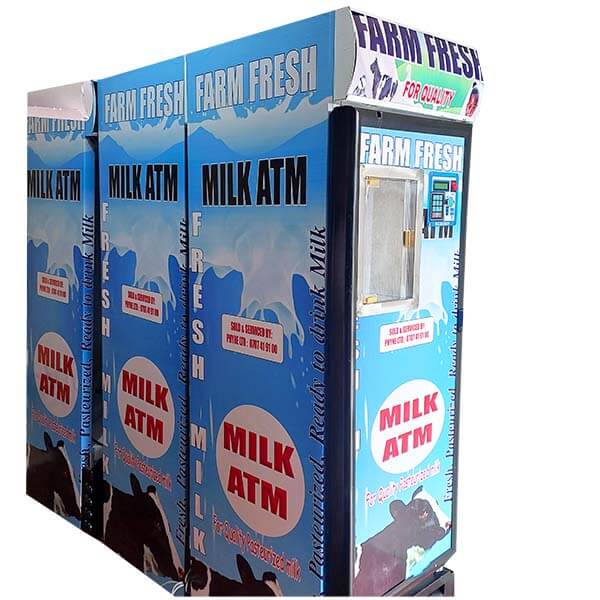
Buy High-Quality KDB-Approved Milk ATMs from Phynetech
Ready to kickstart your milk ATM empire? Phynetech’s KDB-approved machines are your secret. Built with food-grade stainless steel, self-cleaning tech, and reliable cooling, they’re designed to keep milk fresh and customers happy. With capacities from 50 to 350 liters, Phynetech delivers durability and affordability. Our milk ATM prices start at KSh 70,000. Don’t settle for less—Phynetech’s milk dispensing machines mean fewer breakdowns, lower costs, and more profits.
Contact us today via any of the means below:
Invest in our milk dispensers and get ahead of the competition!
Discussion
Testimonials
"Talk of quality products Phynetech limited got u covered.Thanks for always being the best and not forgetting the customer service"
Becky Gichimu


